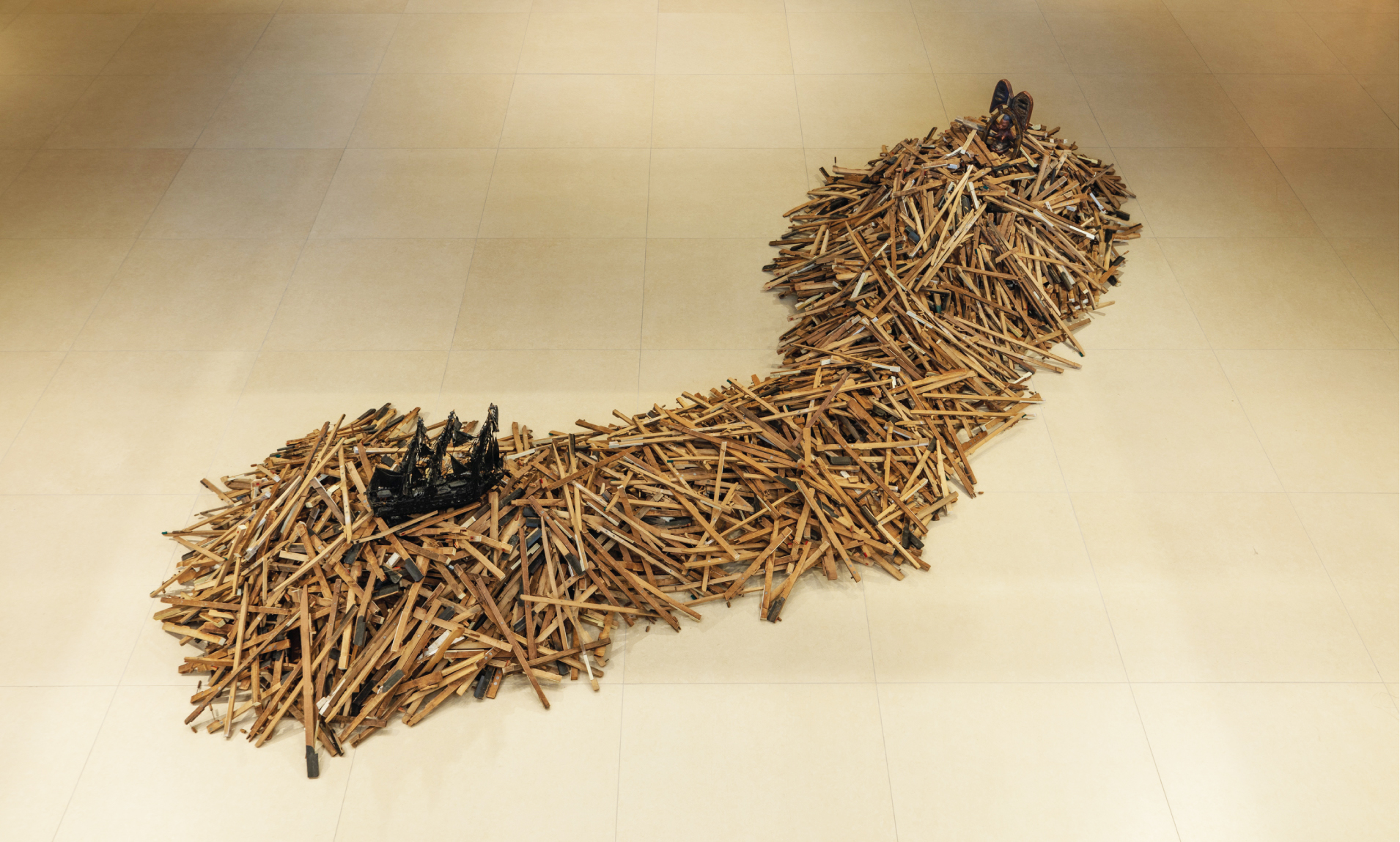In Conversation with Radcliffe Bailey

"I've always felt like the only way I can heal myself … is to go back through my memory, learn from memory." —Radcliffe Bailey
Join us for a conversation between Radcliffe Bailey—whose powerful mixed-media work Storm at Sea (2007) is now on view in re: collections, Six Decades at the Rose Art Museum—and Dr. Elyan J. Hill, the Rose’s Guest Curator of African and African Diaspora Art. The two will discuss Bailey’s monumental installation as it relates to themes woven through and across his broader artistic practice.
ABOUT STORM AT SEA (2007)
Dismantled piano keys form the turbulent waves of Radcliffe Bailey’s Storm at Sea. Though they can no longer perform their original musical function, they resound in new, amplified ways. Arcing between a dark ship and an African sculpture, the repurposed keys voice a visual lament. Cascading across the Lower Rose’s gallery floor, they evoke the histories of Black individuals who have been kidnapped, enslaved, and forced into passage across the Atlantic Ocean, as well as the bones of those who tragically drowned at sea, their lives cut short before they reached American shores.
For many Black Americans descended from enslaved Africans, the violence of the slave trade and the trauma of these waters continue to separate them from knowledge of the homelands and cultures from which their ancestors were so violently uprooted.
ABOUT THE ARTIST
Radcliffe Bailey (b. 1968, Bridgetown, NJ; lives and works in Atlanta, GA) is a painter, sculptor, and mixed media artist who utilizes the layering of imagery, culturally resonant materials, and text to explore themes of ancestry, race, migration, and collective memory. His work often incorporates found materials and objects from his past—including traditional African sculpture, tintypes of his family members, and Georgia red clay—as well as music's cultural significance and rhythmic properties. Individual experience is a departure point in Bailey's quest to excavate the collective consciousness of the African diaspora and regional American identities. His practice is often quilt-like in aesthetic and creates links between diasporic histories and potential futures.